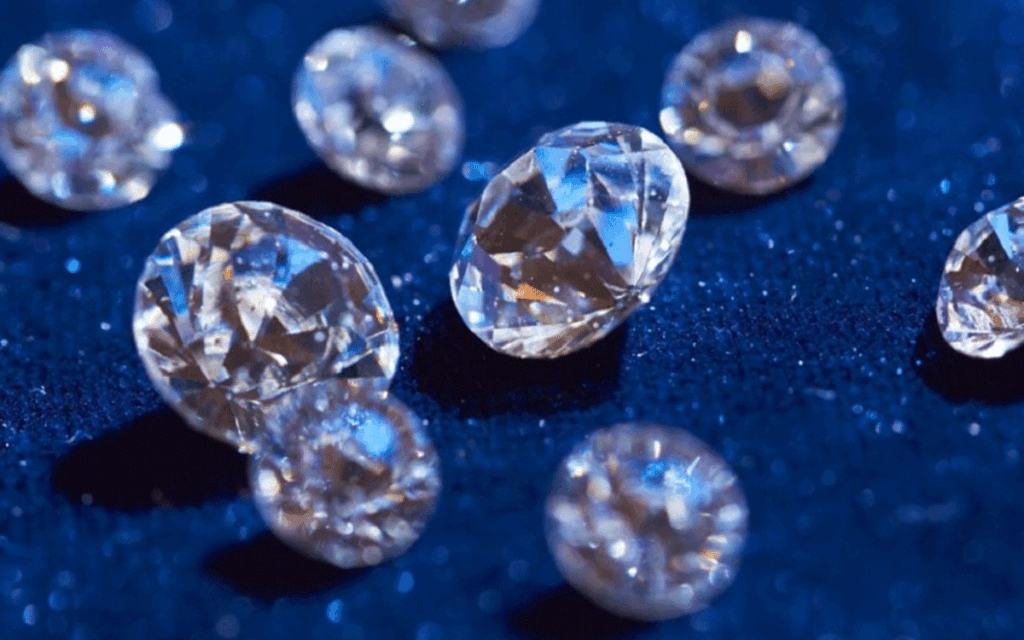What Are Internally Flawless Diamonds
What is Diamond Clarity
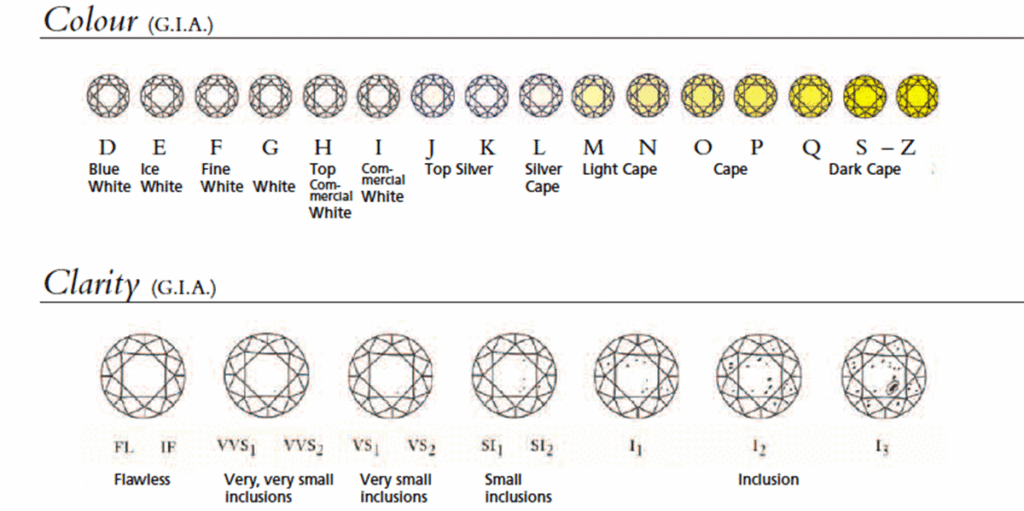
- Flawless (FL) – No inclusions and blemishes visible under a 10x microscope
- Internally Flawless (IFL) – No inclusions visible under 10x microscope
- Very, very slightly included (VVS1 and VVS2) – Inclusions difficult to see by a skilled grader using a 10x microscope
- Very slightly included (VS1 and VS2) – Inclusions can be seen with “effort” under 10x magnification but can be called minor
- Slightly included (S1 and S2) – Inclusions are noticeable under a 10x microscope
- Included (I1, I2, and I3) – Inclusions are obvious under a 10x microscope and may affect transparency and brilliance.
If curiosity gets the better out of you, from the above, you may wonder “is there such a thing as a flawless diamond?” The answer is “No.” Diamonds classified by the GIA as flawless will show inclusions under 60x or 100x magnification. Less than 1% of all diamonds found are “flawless” based on the definition shown above.
The above also provides the answer to the question “What is internally flawless vs. flawless?”
Now let’s go to the specifics of internally flawless diamonds…
What are Internally Flawless Diamonds
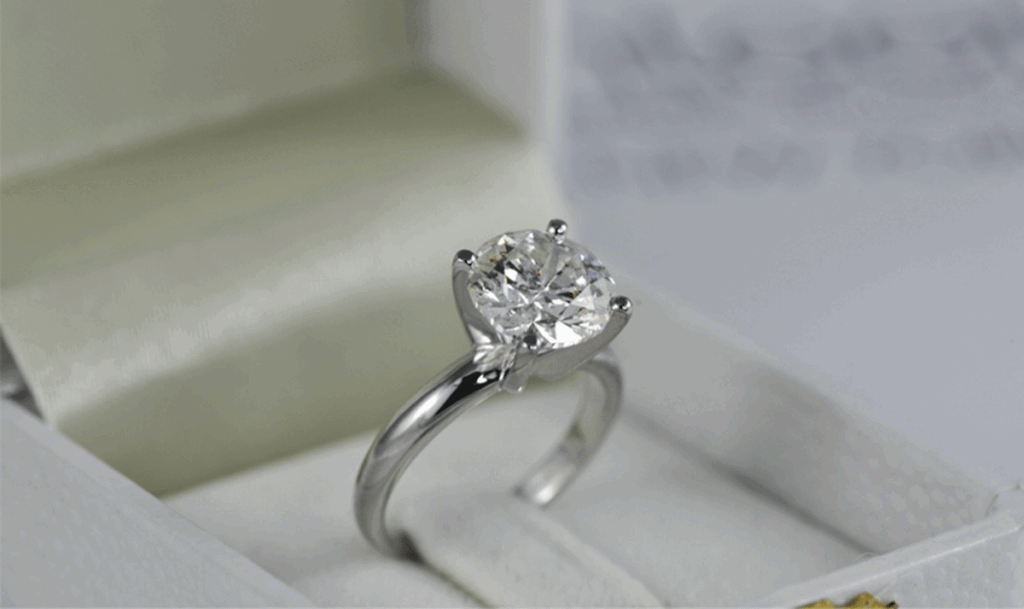
Do Internally Flawless Diamonds Sparkle More?
Cut
Round Brilliant
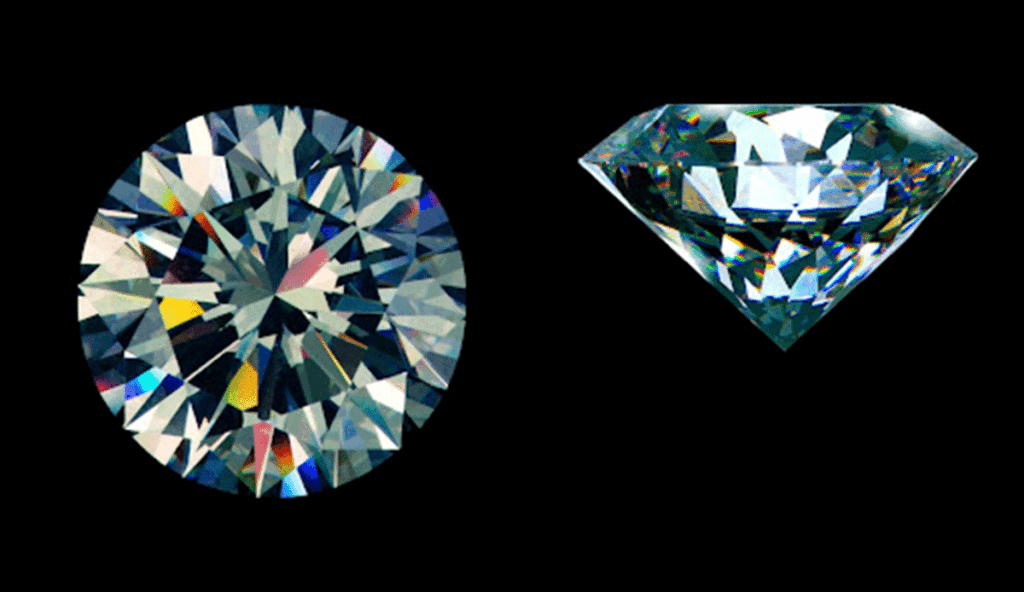
Princess
This cut type has the ability to absorb much light and reflect it back to the beholder. Consequently, this results in an absolutely stunning display of sparkle. Princess cut diamonds shines best on rings, such as the one in this Diamond Nexus review.
Radiant
The radiant cut was developed to combine the best aspects of the round brilliant cut and the emerald. As a result, you can have an internally flawless diamond with 70 facets to reflect light and create a fantastic sparkle.
Cushion
If you are looking for a diamond with a vintage look, then this cut is perfect for you. Just look at the piece in this Malabar Gold and Diamond review.
Just like a cushion, it is square-shaped with cut corners but with brilliant faceting. And here’s a bonus, cushion cut diamonds are a little cheaper compared to other cuts.
Shape
One reason diamonds stand out against other gems is their gorgeous gleam and stunning sparkle. And other than its cut, its shape contributes greatly to this. The reason is simple—the bigger the area for light absorption, the greater is the reflection.
The following are samples of shapes that can make your internally flawless diamond sparkle more.
Round
Round-shaped diamonds are said to be suitable for any finger size. No wonder 50 to 75% of all diamonds sold around the world are round diamonds.
They have perfect symmetry with a large area for light absorption. And they can amplify light reflection from the top facet.
When it comes to sparkle, round diamonds are unmatched. By the way, they are also more expensive compared to other shapes—even at the same carat weight.
Cushion
This is a fairly new diamond shape that combines the best features of the round cut and princess cut.

Princess
The princess-shaped diamond is considered the modern alternative to the round. It provides excellent reflection and stunning sparkle due to its 76 facets that amplify light reflection.
Asscher
This is square-shaped, or very close to a square. Asscher-shaped diamonds focus on clarity, rather than sparkle. Oh, they still give off some sparkle, though not as intense as the round. They also hide inclusions better than other shapes, which is its major selling point.
Despite its minor drawback: sparkle-wise – they still make incredibly glamourous and stunning engagement rings.
Are Internally Flawless Diamonds Worth Buying?
You are about to buy a diamond but you are not sure which one. Whereas you want to express your deep love for your Mom or a younger sister by giving them a gift they will be very happy about—and make you proud, as well, two things bother you: your budget and the kind of diamond that best suits your purpose.
This problem is not as daunting as it seems. You can still achieve your goal but you may have to scale down your expectations.
Here’s something to ponder about: a carat of round flawless diamond costs between $ 6,000 to $ 9,000. As per industry practice, the internally flawless diamond price of the same size is roughly 25 to 30% lower.
And if this horrendous IF diamond price isn’t enough to give you hiccups, there are a couple of good issues that will make buying and IF diamond not worth your while.
Sustainability and labor
It takes approximately 250 tonnes of ore to get one carat of gem quality polished diamond. And since less than 1% of all mined diamonds are of the FL and IF quality, you can extrapolate that to arrive at the horrendous amount of dirt to be dug so you can buy your internally flawless diamond.
On top of that, legal diamond mines are manned by uneducated, exploited, underpaid, and underfed labor. Behind that are the illegal operations producing what is called the “blood diamonds.” If the working conditions of legal mines are appalling, imagine what is it like with the illegal ones.
In fact, a lot of millennials, those who are more socially conscious,, are shying away from diamonds for these very reasons.
Practicality
While it is nice to pay for a top-tier diamond, it is not money well-spent.
Here’s why: nobody will ever notice the difference between an FL and IF stone. Or an IF from a VVS or VVS1. Their differences are so small to be noticed by non-experts.
Yes, going for an extremely clear gem may feed your ego, it doesn’t bid well for your wallet since you can buy diamonds that are just stunning for far less the price.
So here are your options:
Price/carat
The first thing to do to achieve your goal is to explore how much you can save by scaling down on your carat requirement, this is especially true if you’re not a big fan of the best carat diamond. As shown above, a carat of internally flawless is roughly $ 4,000, yet you can get a round cut diamond at $ 1,900 for a VVSI.
If diamond color is one of your buying criteria. a colorless diamond costs about $ 8,000 while you can get one that is near colorless at $ 6,610 per carat. If you know about the characteristics of colorless diamonds, choosing one won’t be a problem.
The point of the above presentation is this: there is a 5% price difference between a 1-carat diamond and a 0.75. Yet, they could both sparkle as intensely. There is a very thin line between a colorless and near-colorless but a couple of thousand bucks price difference.
Eye-clean
Another practical approach in deciding what to buy is to use the “eye-clean” approach.
While this article may be about internally flawless diamonds, but its end-point is to help you choose the right kind of diamond to suit your purpose. Dwelling so much on that will be a disservice knowing how unnecessarily expensive it is. To give you better leverage, the “eye-clean” approach is introduced.
An eye-clean diamond is one that has no imperfection visible to the naked eye. They still have excellent value but cost a fraction compared to the flawless or internally flawless types.
Good examples of an eye-clean diamond are a VS1 and VS2(with minor inclusions easily detected by a trained professional under 10x magnification).
And you can tell an eye-clean diamond yourself if you have a 20.20 vision. Just look at it from the top, straight down, six to 12 inches from your face. If your vision is good enough, you can see the imperfections.
The Paragon Diamond is the largest and most flawless diamond in the world. It weighs an astonishing 137.2 carats and falls under the D color category. It was mined in Brazil but gained world renown for being exceptionally white and flawless.
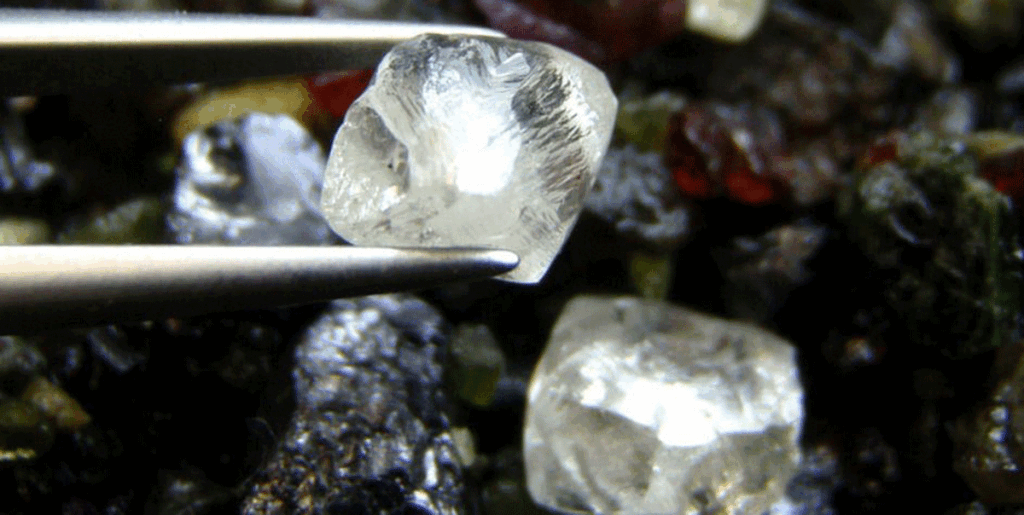
While this type of diamond is surely coveted by the super-rich and famous, ordinary folks like you shall remain in the realm of internally flawless diamonds which are often beyond your reach due to their rarity and price.
And we’re just about done here. Now that you’re familiar with near flawless diamonds, you might want to learn more about the importance of diamond cut. Check out our article, “No Cutting Corners: Why Is Diamond Cut Important.”
